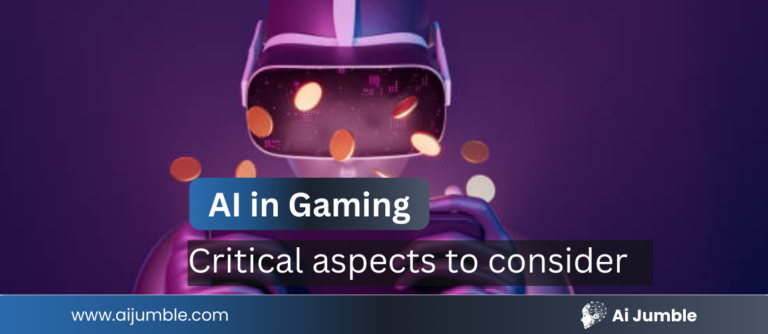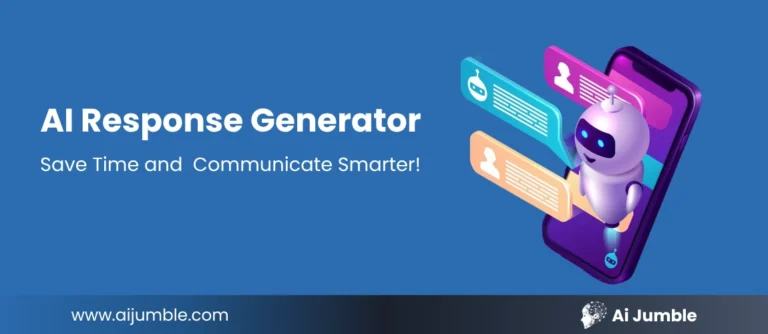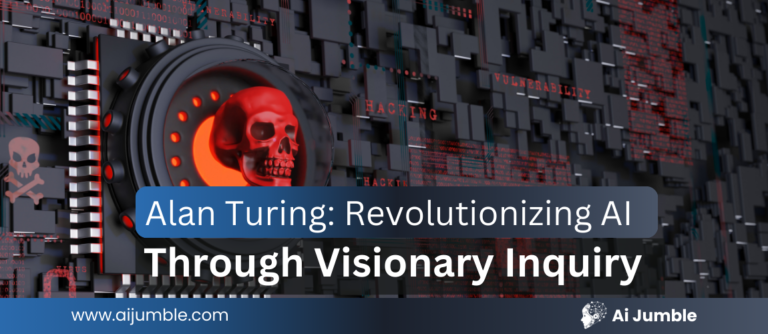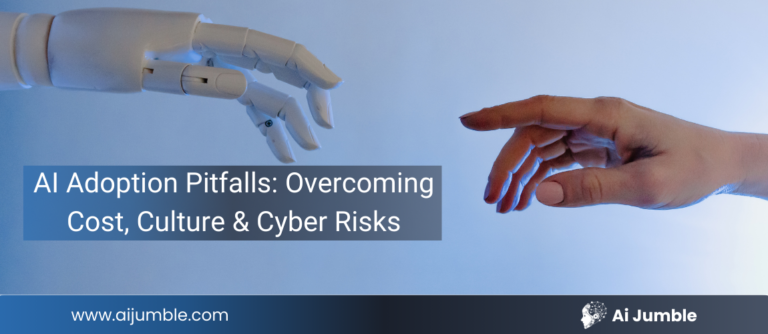ChatGPT’s Ghibli AI can turn your photos into stunning animation within seconds, while traditional Studio Ghibli animators dedicate years to perfecting their craft. The new image generator from OpenAI, GPT-4o, has become a social media sensation. Users now recreate their personal snapshots and famous pop culture moments in the beloved Ghibli style.
The artistic community stands divided over this tech breakthrough. Almost 4,000 people have signed an open letter against AI art auctions. Legendary director Hayao Miyazaki went further and called AI-generated art “an insult to life itself.” This clash between state-of-the-art technology and artistic authenticity raises crucial questions about creative expression.
This piece shows how ChatGPT’s Ghibli art features are changing digital art’s landscape. You’ll see why artists feel both thrilled and worried about these developments and what they mean for creative expression as AI continues to evolve.
Table of Contents
ToggleThe Viral Phenomenon of ChatGPT's Studio Ghibli Art
OpenAI set off a creative storm with their latest image generator powered by GPT-4o in late March 2025. A simple demonstration during a livestreamed presentation became a global sensation that filled social media feeds within hours. Users tried various cartoon styles, but one esthetic stood above the rest – the instantly recognizable Studio Ghibli style.
How the trend exploded across social media
The Ghibli AI art phenomenon sparked during OpenAI’s official presentation when developers took a selfie and asked GPT-4o to turn it into an anime movie frame. The result struck everyone – a photo instantly “Ghibli-fied” with the gentle, hand-drawn look that defines Miyazaki’s films. This demonstration image spread faster across platforms and inspired thousands to try the same technique.
ChatGPT’s new AI image generator went live, and within 24 hours, social media platforms overflowed with Ghibli-style recreations. X (formerly Twitter), Instagram, and Reddit users shared their AI-generated artwork under trending hashtags like #GhibliStyle and #AIGhibli. The excitement for ChatGPT Ghibli art grew so fast that it dominated trending topics on X.
This trend’s explosive growth compared to other AI image styles stems from anime’s massive global following, especially in the US, where about 72% of people watch anime daily. The latest GPT-4o model also let users create highly detailed images with minimal input – a feat previous versions couldn’t match with such precision.
OpenAI’s CEO Sam Altman joined the movement by changing his profile picture to a Ghibli-style illustration of himself. His participation gave the trend an extra boost and implicit support from AI industry leaders.

Notable examples that captured public attention
The ChatGPT Ghibli art generator’s popularity led users to get more creative. The trend grew beyond simple selfie transformations into categories that caught everyone’s imagination:
- Personal transformations: People turned photos of themselves, family members, and pets into magical Ghibli-style art
- Pop culture reimaginations: Users created Ghibli versions of scenes from "The Lord of the Rings," "The Sopranos," and other beloved franchises
- Meme transformations: Classic internet memes got the Ghibli treatment, including the "distracted boyfriend," "bro explaining" meme, and the infamous image of Ben Affleck smoking
- Celebrity renditions: A viral post showed Elon Musk playing with cutlery - based on a recent video of him balancing spoons during Donald Trump's dinner
- Heartwarming pet portraits: Janu Lingeswaran's photo of his 3-year-old ragdoll cat Mali turned out so charming he thought about "printing it out and hanging it on the wall"
Brands spotted the marketing potential and created promotional content featuring their products in the distinctive Ghibli esthetic. The style’s versatility turned everything from coffee cups to bicycles into whimsical Ghibli-esque objects.
The trend’s most striking aspect was its extension beyond lighthearted imagery. Some users applied the Ghibli style to historical moments and political content, creating an odd mix between the animation studio’s wholesome esthetic and serious subject matter. This sparked controversy, especially when the White House’s official X account posted a Ghibli-style image of a woman being arrested by immigration authorities.
Why Studio Ghibli's esthetic strikes a chord so deeply
Studio Ghibli proved the most popular by far among all cartoon styles users tried through ChatGPT’s image generator. This preference shows the profound cultural effect of Hayao Miyazaki’s distinctive artistic vision.
Directors Miyazaki and Isao Takahata founded Studio Ghibli in 1985. They’ve created some of the most acclaimed animated films ever, including “My Neighbor Totoro” (1988), “Princess Mononoke” (1997), “Spirited Away” (2001) – which won an Academy Award for Best Animated Feature – and “Howl’s Moving Castle” (2004).
Ghibli’s esthetic draws people in through several key elements:
- Vivid detail and rich color: Miyazaki's frames come alive with vibrant colors and intricate details
- Dreamlike quality: Regular objects take on a magical, dream-like character in Ghibli works
- Handcrafted authenticity: The studio's productions are hand-painted with minimal digital help - a time-consuming process that creates unique visual warmth
- Strong female protagonists: Ghibli films often tell coming-of-age stories with strong-willed female characters who direct their path while staying true to themselves
Many users trying the ChatGPT Ghibli art generator felt powerful emotional ties to their childhood memories of these beloved films. One user described seeing herself and her cats in Ghibli style gave her “chills of happiness” – like “peering into an alternate reality where I could exist in those films’ universe”.
The viral phenomenon raised questions about artistic integrity. Many noticed the irony that this AI-generated trend goes against Studio Ghibli’s and Hayao Miyazaki’s principles, as he has explicitly rejected AI animation. Miyazaki believes animation and human craft are inseparable – “I believe that the tool of an animator is the pencil,” he told The New York Times.
This Ghibli image flood showed both the magical appeal of this iconic animation style and growing concerns about art becoming disposable in the age of generative AI.
Understanding the Technology Behind ChatGPT's Ghibli Style
Let’s learn about how this technological marvel works and how it compares to Studio Ghibli’s traditional animation methods.
The chatgpt ghibli art generator gets its magic from a revolutionary training approach. GPT-4o differs from previous AI image models because it “was trained on the joint distribution of online images and text, learning not just how images relate to language, but how they relate to each other”. This multimodal approach helps the model understand visual styles and artistic esthetics better.
The system’s ability to maintain stylistic consistency makes it impressive. Rather than applying simple filters, it analyzes existing artwork to understand what makes Ghibli’s visual language unique. OpenAI reports that GPT-4o went through “aggressive post-training” to achieve its “surprising visual fluency”. This enables the system to create images that match the Ghibli aesthetic remarkably well.
The technical process works in a simple yet powerful way. Several complex operations happen when you upload a photo to ChatGPT and ask for a Ghibli transformation:
- Image Analysis: GPT-4o analyzes your uploaded image, identifying key elements like faces, objects, and the overall composition
- Style Mapping: The model references its training on Studio Ghibli's distinct visual elements
- Content Preservation: The system maintains the core elements of your original image while applying stylistic changes
- Rendering: Finally, it generates a new image that preserves the essence of your original while adopting Ghibli's characteristic look
Users see a simple interface that hides the complex computations happening underneath. You just need to “Upload your photo and prompt: ‘restyle image in studio ghibli style, keep all details'”. The neural network behind this interface understands and replicates nuanced artistic styles with remarkable precision.
GPT-4o stands out from previous models because it knows how to handle detailed instructions better. Earlier AI image generators don’t deal very well with “~5-8 objects,” but GPT-4o manages “up to 10-20 different objects” with better control over “their traits and relations”. So the images it creates are more coherent than what earlier AI art tools could produce.
The studio ghibli gpt experience becomes highly customizable through iterative refinement. Users can naturally chat with ChatGPT to adjust their images by asking for specific changes like “Can you make the face more expressive?” or “Add more background details in the Ghibli style”. This feedback helps fine-tune the image until it matches what you want.
Step-by-Step Guide to Creating Ghibli-Inspired AI Art Using ChatGPT
You can now create your own Ghibli-inspired artwork easier than ever before. AI image generation advances let you produce stunning visuals that look like Miyazaki’s masterpieces in just minutes. Let me show you how to create magical Studio Ghibli-style images with ChatGPT.
You’ll need ChatGPT with GPT-4o capabilities to start. The process works best with a ChatGPT Plus subscription ($20.00/month), though you can still create Ghibli-style images using the free version.
ChatGPT Plus users can follow these simple steps:
- Log in to your ChatGPT Plus account at chat.openai.com
- Click on the three-dot icon in the prompt bar
- Select the "Image" option that appears alongside "Canvas"
- Upload a photo you wish to transform or describe a scene
- Enter a detailed prompt such as: "Transform this image into Studio Ghibli animation style with vibrant colors, soft lighting, and the characteristic whimsical feel of Miyazaki films"
- Wait for the AI to generate your image (typically 2-5 minutes)
- Download and share your creation
Free version users can try this alternative: upload an image and use the prompt “convert this image into Ghibli art studio style.” Results might vary, but many users find success with this method.
Your success with chatgpt ghibli art depends on well-crafted prompts. Tech enthusiast Anjana Rao suggests that users should “be more specific” when describing their wants. Results improve substantially when you add details like “soft color palette,” “whimsical background,” or mention specific films like “My Neighbor Totoro.”
Expert users create the best ghibli ai artwork through iteration. After getting your first image, you can request specific changes:
- "Make the face more expressive"
- "Add more background details in the Ghibli style"
- "Make it more dreamlike with softer lighting"
Keep refining until you get your desired result.
Advanced users boost their output by opening multiple browser tabs with similar prompts. This gives them several options while saving time.
Unique studio ghibli gpt creations come from mixing styles in your prompts. You might try: “Transform this image into a Ghibli style, but blend it with cyberpunk elements.” These creative combinations often create the most eye-catching results.
The chatgpt ghibli art generator takes about 2-5 minutes to process each request, based on server load. This popular feature sees heavy use, so generation times might increase during busy periods.
Comparing AI art to traditional animation techniques
ChatGPT’s Ghibli style generator becomes even more impressive when you compare it with Studio Ghibli’s traditional animation methods. These two approaches to artistic creation are fundamentally different.
Studio Ghibli’s animation relies on careful hand-drawn techniques. Miyazaki’s films are “meticulously hand-painted, and use next to no digital assistance”. Each frame takes countless hours of skilled human artistry. Miyazaki himself believes that “the tool of an animator is the pencil”, which shows how vital the human element is in animation.
Chatgpt ghibli art takes just seconds to transform ordinary photos into Ghibli-styled images. This huge difference in speed shows the most obvious contrast between AI and traditional methods – efficiency versus craftsmanship.
The artistic process differs profoundly in several ways:
Artistic Control: Traditional animators can “meticulously craft each frame and expression”. This allows for precise emotional nuance. AI generation, though increasingly sophisticated, works within limits set by its training data and can’t fully match human artists’ intentional choices.
Detail and Precision: While GPT-4o creates impressive versions of the studio ghibli art style, traditional animation excels at “detailed facial expression control and subtle changes” that AI still can’t fully capture. These subtle elements often convey complex emotions better.
Artistic Soul: The biggest difference might be the artwork’s “soul.” Traditional animation adds “a bit of human touch, offering a depth of expression and emotion that machines can’t easily replicate”. Ghibli films’ hand-drawn quality creates a warmth that even advanced AI struggles to match.
The line between these approaches grows thinner. GPT-4o shows significant progress toward AI that can “handle certain aspects of the animation process” while staying true to established styles. Industry experts suggest future “hybrid workflows” where AI handles basic elements while human artists focus on nuanced details.
The ghibli ai revolution isn’t ending traditional animation – it’s changing it. Artists see these tools as ways to optimize production or explore creative possibilities they couldn’t before. AI can create complex backgrounds or handle repetitive tasks, letting human artists focus more on story and character development.
A philosophical tension remains despite these potential benefits. Miyazaki has been “a vocal critic of AI-generated art”, seeing it as opposite to his artistic philosophy. This perfectly captures the broader debate in the artistic community between embracing technological efficiency and keeping the human essence in creative expression.
As chatgpt ghibli art style evolves, we’re not just asking if AI can copy Studio Ghibli’s look – we’re considering what we gain and lose when art moves from human hands to algorithms. ChatGPT’s Ghibli-style generator isn’t just a technical achievement – it’s a fascinating example of how art, technology, and human creativity intersect.
Why Artists Are Amazed by ChatGPT's Ghibli Capabilities
Professional artists find themselves amazed by ChatGPT’s uncanny ability to mimic Studio Ghibli’s distinctive esthetic, despite mixed opinions about AI-generated art. The debate around chatgpt ghibli ai swings between excitement over technical breakthroughs and worries about artistic integrity.
The technical achievement of mimicking Ghibli's style
GPT-4’s ability to copy specific visual styles with amazing accuracy has impressed many creative professionals. This goes beyond creating basic anime visuals. The system captures “very specific esthetics like Minecraft block graphics, 8-bit pixel art, or — notably — the gentle watercolor look of Studio Ghibli animations”.
The technology has made a huge leap forward. Previous AI systems didn’t deal very well with consistency and produced obvious flaws. The chatgpt ghibli art generator now creates images with “less wonky fingers and weird background details… making it harder to distinguish AI images from the real thing”. This shows how far AI has come in understanding complex artistic styles.
Users were blown away by the image quality right from the start. Many called the results “insane,” noting how well the system turned creative prompts into ghibli style art. This goes way beyond applying simple filters and shows a deep understanding of Ghibli’s visual approach.
OpenAI’s balanced approach makes this achievement stand out. The company takes what it calls a “conservative approach” to copying individual artists while allowing “broader studio styles”. This difference has led to “truly delightful and inspired original fan creations” and helps address ethical concerns.
Artists who see potential in the technology
Many artists see AI as “a powerful collaborator in the interests of human creativity”, despite the controversy. This shows how chatgpt ghibli art tools can work alongside human creativity rather than replace it.
Creative professionals view AI as “a new outlet for their own creativity – a fresh medium they can wield much like a brush or palette knife”. These artists see studio ghibli gpt and similar tech as new tools in their creative arsenal.
Some artists have taken control of the AI process by “exclusively training algorithms on their works alone to challenge their own creative boundaries”. This turns AI from a potential threat into a personal assistant that helps artists discover new aspects of their style.
Supporters claim that AI art tools creating chatgpt character ai “make art creation available and allow unorthodox hands to involve in and enjoy new kinds of art”. The technology makes artistic expression available to more people without reducing its value.
Some see AI-generated Ghibli art as “homage rather than imitation”. These technologies might promote appreciation for traditional art forms instead of replacing them. This mirrors photography’s relationship with painting – what started as a threat revolutionized the art world.
How AI art can inspire new creative directions
Smart artists are learning how AI might improve human creativity instead of limiting it. One interesting idea suggests that “AI might help us to stop behaving like machines…and kick us into being creative again as humans”. This flips the common fear that technology makes us more mechanical.
Creative Adversarial Networks (CANs) show this potential. These systems are “designed to think over creating something that goes against the patterns in the training data, breaking with the style of the art upon which it’s been trained”. Advanced AI can create new artistic directions instead of just copying existing styles.
Human-machine collaboration opens up “a space for real creative potential”. Experts point out that what matters isn’t just the final image but “what they are using the system for, what are they exploring”. Chatgpt ghibli becomes a starting point for creative growth.
Artists know that creativity has always built on existing work. One view notes that “all art is a product of that which came before it, and creativity cannot come from nothing – all artists whether human, robot or algorithm, build upon the works of others”. Ghibli ai inspiration might just be a new way of continuing artistic influence.
The future might bring “hybrid workflows” where AI handles basic tasks while human artists focus on subtle details. This combination could free up human creativity by automating technically demanding but creatively limited parts of production.
The Copyright Concerns Raised by AI Art Generation
The viral chatgpt ghibli ai trend has unleashed a flood of legal questions that are way beyond the reach and influence of mere artistic appreciation. These AI-generated images now stand where technology meets intellectual property disputes. This intersection raises basic questions about who owns what and how compensation works in today’s digital world.
Legal questions about training AI on copyrighted work
The biggest problem with ghibli ai revolves around AI companies’ right to train their models using copyrighted works without permission. Intellectual property experts say that while “style” isn’t protected by copyright law, “specific, discernible, discrete elements of a work of art” might be. AI training uses millions of copyrighted images, which creates a complex situation.
Josh Weigensberg, partner at law firm Pryor Cashman, asks the crucial question: “Do they have a license or permission to do that training or not?”. Courts are still looking at whether AI training counts as fair use or violates copyright law.
OpenAI's approach to style vs. individual artist replication
OpenAI has responded to growing concerns by making a clear difference between artistic styles. The company added “a refusal which triggers when a user attempts to generate an image in the style of a living artist”. They still allow “broader studio styles” like studio ghibli art style.
OpenAI built “an internal search tool that uses technical attributes of generations to help verify if content came from our model”. They’ve also put “heightened restrictions” on images involving real people.
Precedents and ongoing lawsuits in the AI art space
Legal battles are revolutionizing AI art’s future. Illustrators Sarah Andersen, Kelly McKernan, and Karla Ortiz won a major victory. US District Judge William Orrick ruled that companies like Stability AI were “violating artists’ rights by illegally storing their works”.
A Delaware court made another landmark decision. They found that an AI company’s unauthorized use of copyrighted materials wasn’t fair use because “the use was commercial and not transformative”. This decision could affect pending cases against OpenAI, including The New York Times’ lawsuit about their content being used without permission.
Karla Ortiz grew up watching Miyazaki’s movies. She sees chatgpt ghibli art generator as “another clear example of how companies like OpenAI just do not care about the work of artists”. She called it “an insult” and “exploitation” of Studio Ghibli’s reputation.
FAQs
The ChatGPT Ghibli art trend involves using AI to transform photos into images resembling the distinctive style of Studio Ghibli animations. It went viral on social media, with users recreating personal photos and pop culture scenes in the iconic Ghibli esthetic.
Studio Ghibli's art style is beloved for its vivid details, rich colors, and dreamlike quality. The studio's hand-drawn animations create a unique visual warmth that resonates deeply with audiences, evoking a sense of nostalgia and wonder.
ChatGPT initially provided access to its new native image generation feature—capable of creating Ghibli-style images—only to its paying members. However, the feature has recently been released, and it is now open not only to paying members but also to free users.
Several free alternatives can help you achieve similar results:
- Gemini and GrokAI: These platforms allow you to generate Ghibli-style visuals using precise prompts.
- Craiyon: A straightforward web-based AI tool for creating Ghibli-inspired images with basic prompts.
- Artbreeder: This platform allows you to blend images and adjust artistic styles, though some features may require paid upgrades.
Free Trials: Some advanced platforms like Runway ML, Leonardo AI, and Mage.space offer free trials that provide better control over specific details in Ghibli-style images.
If you're interested in trying out Ghibli-style AI art creation, you can explore these free alternatives or consider the ChatGPT Plus subscription for access to the official feature.
ChatGPT may not be generating Ghibli-style images due to several reasons:
- The feature might not be available in your current plan.
- Ghibli-style generation might be restricted due to copyright concerns.
- OpenAI may not support Studio Ghibli-inspired images due to licensing issues.
AI models like GPT-4o analyze existing Ghibli artwork to understand the fundamental elements of their visual style. When given a photo, the AI processes it to maintain core elements while applying Ghibli-esque stylistic changes, resulting in a transformed image.
Some worry that AI-generated art devalues the work of human artists and dilutes the uniqueness of Studio Ghibli's style. There are also copyright concerns about training AI on copyrighted works without permission.
While AI art generation could streamline some aspects of animation production, many believe it won't replace human creativity. Instead, it may lead to new hybrid workflows where AI handles basic elements, allowing human artists to focus on nuanced details and storytelling.
Have an AI tool to Submit?
AiJumble is the ultimate AI tools hub, featuring 5000+ tools and expanding daily. Get your AI tool listed or explore advertising opportunities to reach the right audience!







